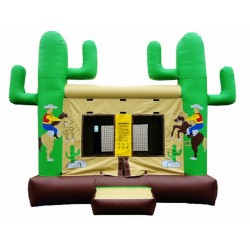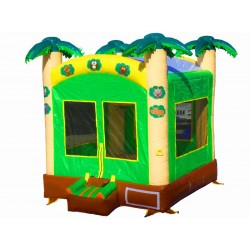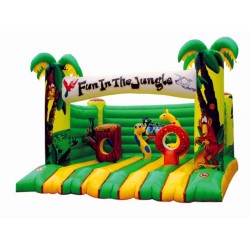Can an Inflatable Castle Business Be a Profitable Venture?

Inflatable castles, have become increasingly popular at parties, festivals, and various events. For entrepreneurs considering entering this industry, the question of profitability is crucial. While the business offers exciting opportunities, it requires careful planning and consideration of multiple factors to ensure success.
Understanding the Market Landscape
The market for inflatable castles is driven by the ongoing demand for unique and engaging entertainment options, particularly for children's events. Several factors contribute to this demand:
- Family-Oriented Events: Birthdays, community gatherings, and school events frequently feature inflatable attractions, making them a recurring rental need.
- Event Diversity: Inflatable castles are now available in a variety of designs, from classic castle shapes to themed units like pirate ships and superhero headquarters, catering to a wide range of customer preferences.
- Growing Outdoor Event Culture: As outdoor events gain popularity, particularly post-pandemic, the need for safe, fun, and socially distanced activities like bounce houses has increased.
Revenue Potential
The revenue potential of an inflatable castle business can be significant, particularly with a solid customer base. Rental fees vary, but typically range between $150 and $400 per day for standard units. Higher-end or specialized inflatables can command even more.
To maximize profitability, business owners should focus on building a strong brand, establishing a reliable booking system, and maintaining good customer relationships to encourage repeat business. Additionally, offering packages for multiple rentals or extended use can boost overall revenue.
Key Challenges
Starting and running an inflatable castle business is not without its challenges. Some of the key hurdles include:
- High Startup Costs: Quality inflatables are a significant investment, with prices ranging from $1,500 to $7,000 per unit, depending on size and features.
- Operational Logistics: Setting up, taking down, and transporting inflatables require time, effort, and sometimes additional staffing, adding to operational expenses.
- Liability Concerns: Ensuring the safety of participants is critical, and liability insurance is necessary to protect against potential accidents, which can be a considerable cost factor.
- Weather Dependence: Outdoor events are often dependent on weather conditions, and cancellations due to poor weather can lead to lost revenue.
Strategies for Success
Despite the challenges, an inflatable castle business can thrive with the right strategies:
- Market Research: Understanding local demand, identifying key competitors, and targeting the right customer segments are crucial steps before launching.
- Value-Added Services: Offering additional services such as event planning, party supplies, or bundled entertainment options can differentiate your business and increase profits.
- Customer Engagement: Building a strong online presence, encouraging customer reviews, and providing excellent customer service can lead to repeat business and referrals.
- Strategic Partnerships: Collaborating with local event venues, schools, and community organizations can provide a steady stream of rental opportunities.
Final Thoughts
An inflatable castle business can indeed be a profitable venture, but success requires more than just a love for fun and games. Entrepreneurs need to be prepared for the initial investment, ongoing operational demands, and the challenges of maintaining a steady stream of clients. With careful planning, smart marketing, and a commitment to safety and customer satisfaction, the potential for profitability is high.
For those with a passion for creating joyful experiences and a knack for business, the inflatable castle industry offers a rewarding opportunity to build a profitable and enjoyable enterprise.



